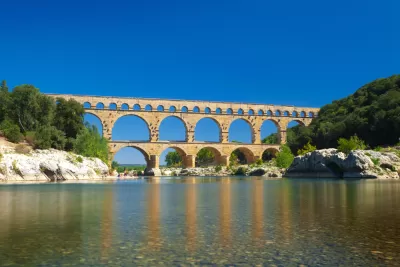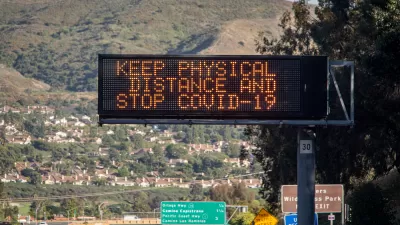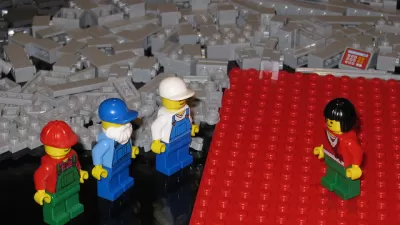How cities around the world have approached thinking about how water management fits in to urban planning.

What does "design with water" mean? To Vincent Lee, Associate Principal and Technical Director for Water at ARUP, it is "a framework for rethinking the place of water in the urban design process, and putting it back at the heart of the design process for the built environment."
In The Planning Report, Lee explains that the design strategy of "blue-green" infrastructure, which addresses not just water or energy use, but also the inherent connections between two. Lee explains how places like Seoul, South Korea; Cardiff, Wales; and New York City have leveraged blue-green infrastructure.
Lee's overall message is simple:
"Implement not just green infrastructure and green design, but blue-green infrastructure and blue-green design."
Lee also shared lessons and related global works to undertakings in progress. In one example, Lee related the work of Seoul’s Cheonggyecheon stream restoration to the Los Angeles River, explaining that there is tremendous potential for the river to become a revitalized area that has a restored ecosystem. The Cheonggyecheon stream restoration has increased biodiversity, reduced air pollution by 35 percent, and reduced the heat island effect by up to 5.9 degrees Celsius within surrounding city blocks.
In talking about lessons he has learned over his career, Lee shares the hope he finds from residents and collaborators who are trying to do something different. He describes the "power of the citizen" in shaping New York City's High Line area, and the success of Rotterdam in adapting to climate impacts by having agencies think about working together.
Read more of Vincent Lee's "green-blue" tour around the world in The Planning Report.
FULL STORY: The ‘Place’ of Water in Urban Design: ARUP's Vincent Lee

Study: Maui’s Plan to Convert Vacation Rentals to Long-Term Housing Could Cause Nearly $1 Billion Economic Loss
The plan would reduce visitor accommodation by 25,% resulting in 1,900 jobs lost.

North Texas Transit Leaders Tout Benefits of TOD for Growing Region
At a summit focused on transit-oriented development, policymakers discussed how North Texas’ expanded light rail system can serve as a tool for economic growth.

Why Should We Subsidize Public Transportation?
Many public transit agencies face financial stress due to rising costs, declining fare revenue, and declining subsidies. Transit advocates must provide a strong business case for increasing public transit funding.

How to Make US Trains Faster
Changes to boarding platforms and a switch to electric trains could improve U.S. passenger rail service without the added cost of high-speed rail.

Columbia’s Revitalized ‘Loop’ Is a Hub for Local Entrepreneurs
A focus on small businesses is helping a commercial corridor in Columbia, Missouri thrive.

Invasive Insect Threatens Minnesota’s Ash Forests
The Emerald Ash Borer is a rapidly spreading invasive pest threatening Minnesota’s ash trees, and homeowners are encouraged to plant diverse replacement species, avoid moving ash firewood, and monitor for signs of infestation.
Urban Design for Planners 1: Software Tools
This six-course series explores essential urban design concepts using open source software and equips planners with the tools they need to participate fully in the urban design process.
Planning for Universal Design
Learn the tools for implementing Universal Design in planning regulations.
City of Santa Clarita
Ascent Environmental
Institute for Housing and Urban Development Studies (IHS)
City of Grandview
Harvard GSD Executive Education
Toledo-Lucas County Plan Commissions
Salt Lake City
NYU Wagner Graduate School of Public Service





























